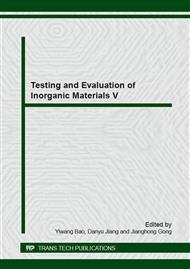p.431
p.439
p.443
p.447
p.451
p.455
p.459
p.463
p.467
Creep Behavior of Building Silicone Sealant under Long-Term External Loading and its Time-Stress Equivalence
Abstract:
The main mechanics behavior character of building silicone sealant is its time dependence£¬which lies in the existence of the interior timepiece or the characteristic time. The creep behaviors were fundamental to evaluating the long-term performance of the building silicone sealant under long-term external loading. A series of creep tests of building silicone sealant were conducted in the laboratory under different combinations of external loads, the characteristics of the creep curve were obtained. In this work, the creep behaviors of building silicone sealant were also investigated under various temperatures at invariable stress. The test measurements show that the creep behavior of building silicone sealant are nonlinear, Nonlinear creep behavior is analyzed by means of the equivalence principle of time-stress, the main creep curve under reference stress was obtained by fitting with the viscoelastic rheological model. So the long-term creep behavior of the building silicone sealant under lower stress can be predicted by short-term creep behavior under higher stress.
Info:
Periodical:
Pages:
451-454
Citation:
Online since:
November 2014
Authors:
Price:
Сopyright:
© 2015 Trans Tech Publications Ltd. All Rights Reserved
Share:
Citation:


